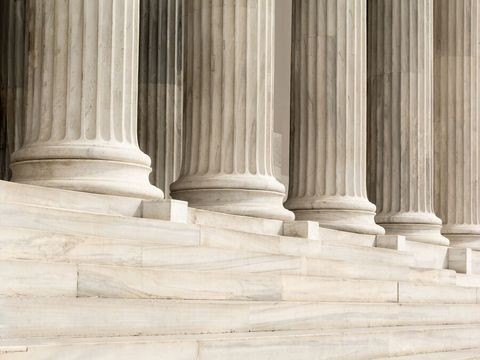New York City’s Pay Transparency Law Goes Into Effect
Client Alert | 3 min read | 11.11.22
On November 1, 2022, the New York City Pay Transparency Law, Int. 134-A, went into effect, requiring employers to include the minimum and maximum salary in job advertisements. With Int. No. 134-A, NYC joins Colorado, Washington State, and California in requiring employers to disclose pay scale information in job postings. Washington State’s and California’s laws go into effect January 1, 2023. The New York State Legislature passed a similar law in June 2022 that has not been signed by the governor. If the bill is signed, it would go into effect 270 days after it becomes law.
Employers and Positions Covered
The newly effective NYC law covers employers with four or more employees, which is consistent with the pending New York State bill. By comparison, Colorado covers employers with just one employee in Colorado, and Washington State and California cover employers with more than 15 employees in state. Under the NYC law, the four employees do not need to work in the same location and as long at least one of the employees works in NYC, the employer is covered. Owners and individual employers count toward the four employees.
Job postings that are covered include full- and part-time employees, interns, domestic workers, and, significantly, job postings for independent contractors. The New York State bill and jurisdictions with similar laws do not include independent contractors. The NYC law is also clear that it covers any advertisement for a job, promotion, or transfer opportunity that could be performed in NYC, including remotely from NYC.
The NYC law covers both internal and external postings, but, unlike Colorado, it does not require an employer to announce or advertise job, promotion, or transfer opportunities. If an employer, however, chooses to advertise opportunities – whether internally or externally – it must include the minimum and maximum salary in the advertisement. An “advertisement” is a written description of an available job, promotion, or transfer opportunity that is publicized to a pool of potential applicants in any medium, including internal bulletin boards, the internet, printed flyers, and the newspaper.
Pay Scale Disclosure Requirements
Covered NYC employers are now required to include the minimum and maximum salary that an employer in good faith believes at the time of the posting they are willing to pay for the advertised job, promotion, or transfer opportunity. “Salary” can be an hourly wage or an annual salary, but it cannot be open ended. Advertisements that cover multiple jobs, promotions, or transfer opportunities can include salary ranges that are specific to each opportunity. Unlike under Colorado law, “salary” does not include other forms of compensation or benefits offered in connection with the advertised job, promotion, or transfer opportunity, although employers may provide that information if they wish.
Enforcement
The NYC Commission on Human Rights will not assess a civil penalty for a first complaint against an employer alleging a violation of the salary transparency provision, provided that the employer shows that it has fixed the violation within 30 days of receiving the Commission’s notice of violation. Not complying is deemed a violation of the NYC Human Rights Act, and thus may result in a fine of up to $125,000 and employers who “willfully, wantonly or maliciously” engage in unlawful discriminatory practices can be fined up to $250,000. Additionally, under NYC’s Human Rights Law, current employees (not applicants) and the Commission on Human Rights are entitled to bring suit against an offending employer, which could subject an employer to additional non-monetary and monetary damages.
The NYC Commission on Human Rights has a fact sheet on Salary Transparency in Job Advertisements which we expect it to update as questions arise. We will continue to update our clients on any new significant guidance from the NYC Commission on Human Rights.
Contacts
Insights
Client Alert | 5 min read | 12.12.25
Eleventh Circuit Hears Argument on False Claims Act Qui Tam Constitutionality
On the morning of December 12, 2025, the Eleventh Circuit heard argument in United States ex rel. Zafirov v. Florida Medical Associates, LLC, et al., No. 24-13581 (11th Cir. 2025). This case concerns the constitutionality of the False Claims Act (FCA) qui tam provisions and a groundbreaking September 2024 opinion in which the United States District Court for the Middle District of Florida held that the FCA’s qui tam provisions were unconstitutional under Article II. See United States ex rel. Zafirov v. Fla. Med. Assocs., LLC, 751 F. Supp. 3d 1293 (M.D. Fla. 2024). That decision, penned by District Judge Kathryn Kimball Mizelle, was the first success story for a legal theory that has been gaining steam ever since Justices Thomas, Barrett, and Kavanaugh indicated they would be willing to consider arguments about the constitutionality of the qui tam provisions in U.S. ex rel. Polansky v. Exec. Health Res., 599 U.S. 419 (2023). In her opinion, Judge Mizelle held (1) qui tam relators are officers of the U.S. who must be appointed under the Appointments Clause; and (2) historical practice treating qui tam and similar relators as less than “officers” for constitutional purposes was not enough to save the qui tam provisions from the fundamental Article II infirmity the court identified. That ruling was appealed and, after full briefing, including by the government and a bevy of amici, the litigants stepped up to the plate this morning for oral argument.
Client Alert | 8 min read | 12.11.25
Director Squires Revamps the Workings of the U.S. Patent Office
Client Alert | 8 min read | 12.10.25
Creativity You Can Use: CJEU Clarifies Copyright for Applied Art
Client Alert | 4 min read | 12.10.25
Federal Court Strikes Down Interior Order Suspending Wind Energy Development





